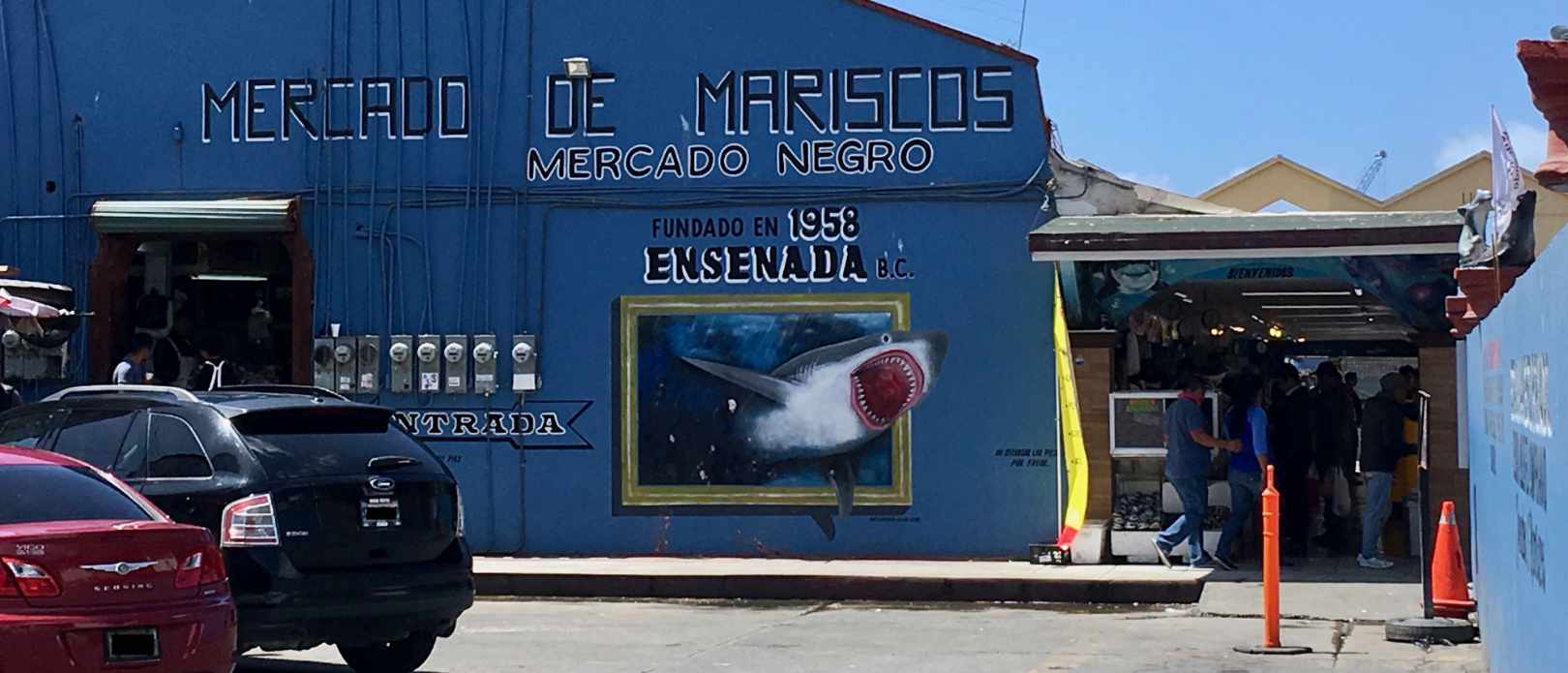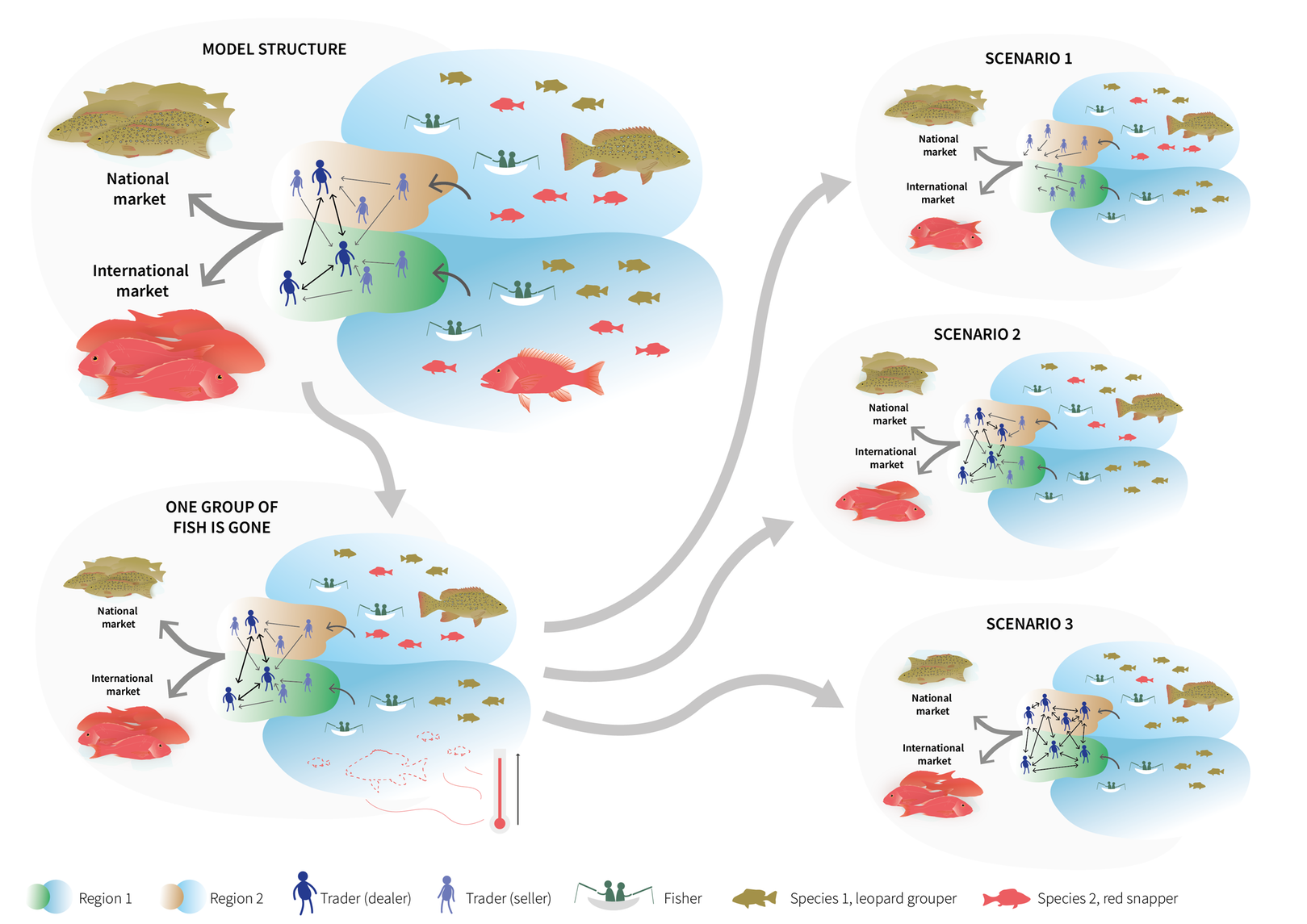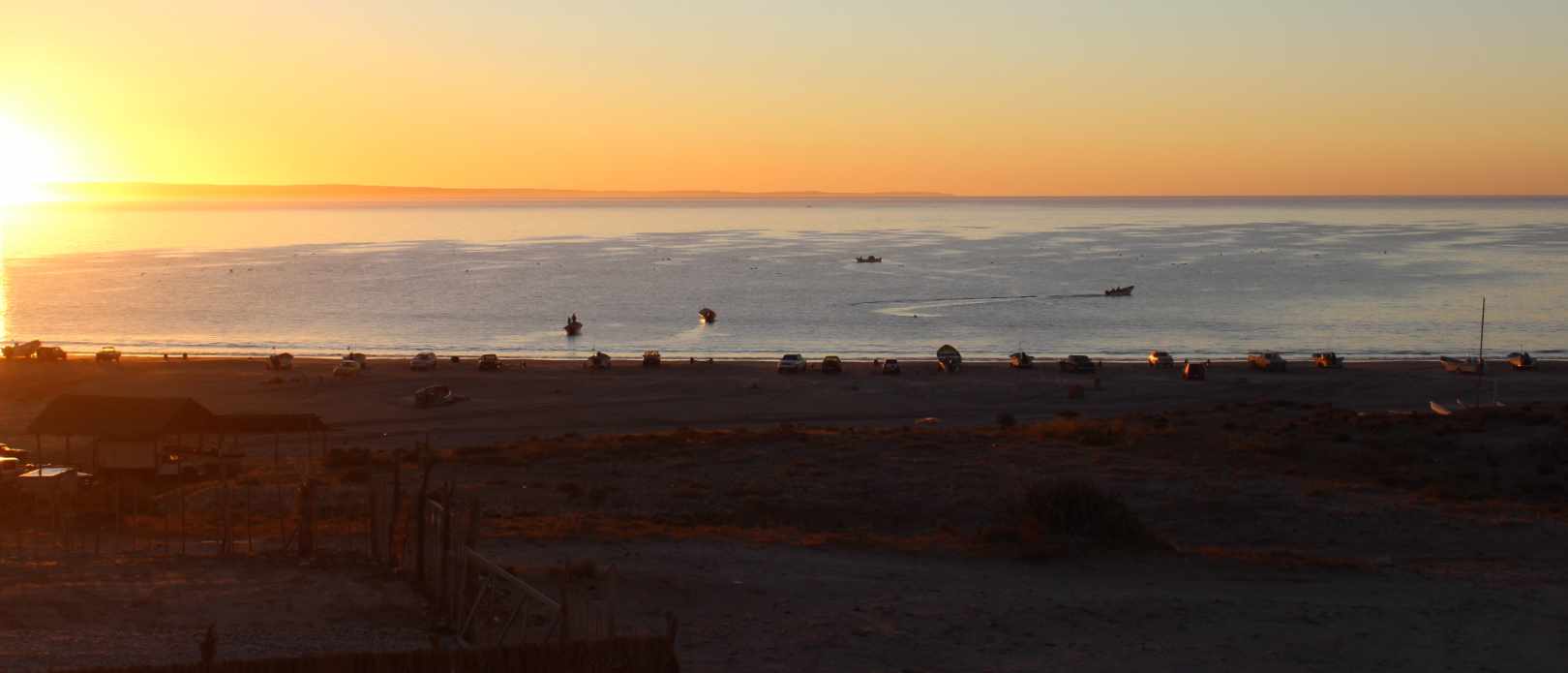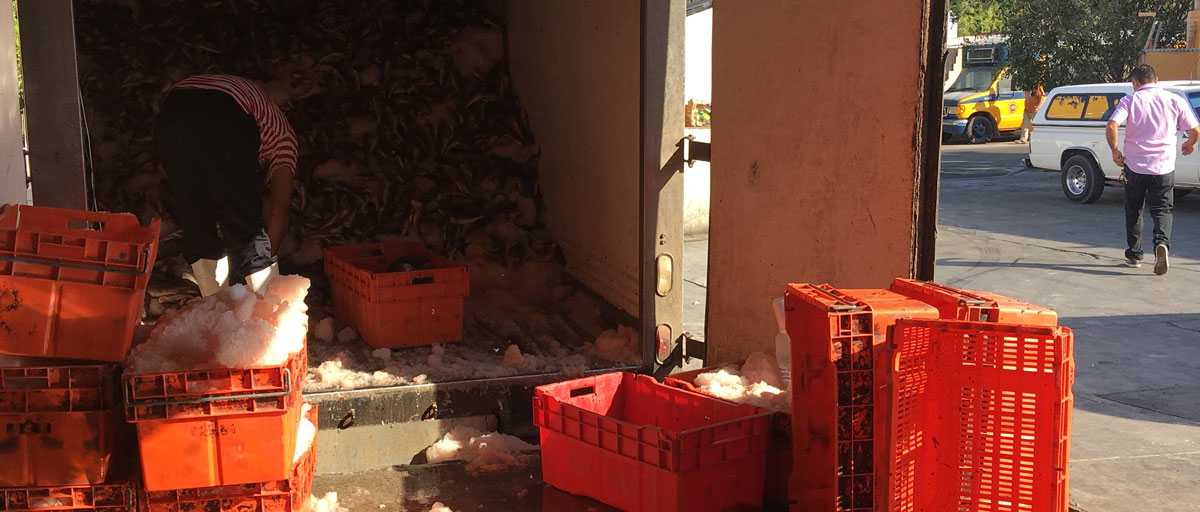SMALL-SCALE FISHERIES
Why fishery trade networks are crucial for local food supply

Anid environmental change, researchers have looked at how complex trade networks can influence fish provision in in Baja California Sur, Mexico. Photo: B. Gonzalez Garcia-Mon
Trade among small-scale fishery traders affects the overall capacity and variability of fish provision
- Local and regional trade networks in small-scale fisheries are important for food security and livelihoods around the world
- A new model provides an empirically-grounded representation of a fisheries trading system
- It reveals important trade-offs that should be considered when evaluating policies and future changes in regional trade networks
NITTY GRITTY NETWORKS: Fish is one of the most internationally traded foods, travelling long distances to reach your neighbourhood supermarket or the sushi restaurant down the road.
It is also traded closer to home, essential for providing nutritious food to millions of local, often low income consumers.
This trade, both near and far, is made up of complex networks of fishers, buyers, and sellers connecting different production regions to different types of fish demand (see illustration below).
This is investigated in a new paper in PLOS ONE led by centre researcher Blanca González-Mon, with SRC colleagues Emilie Lindkvist, Örjan Bodin and Maja Schlüter, and José Alberto Zepeda-Domínguez from Universidad Autónoma de Baja California.
Our model reveals important trade-offs that should be taken into account when evaluating future changes to regional trade networks.
Blanca González-Mon, lead author
Risk for overexploitation
The authors looked at how trade among different types of small-scale fishery traders affects the overall capacity and variability of fish provision in a multi-species fishery, when facing different situations of changes in fish catchability.
The model revealed that specific combinations of different trader types and their spatial connectivity have the potential to increase fish provision, but they can also increase overexploitation (see illustration below).
“We deployed a mixed-methods approach, combining agent-based modelling, network analysis and qualitative data from a small-scale fishery in Baja California Sur, Mexico,” says González-Mon.
From this they could see how different trade network structures affect the exploitation of different fish stocks and their availability in the markets, when one species disappears from one fishing region but it is still caught in another distant fishing region that is connected through trade:

Illustration: E. Jonsson/Azote
Understanding relationships
Studies on fisheries trade have often focused on understanding vertical interactions in the value chain—all stages from producers to consumers—rather than on trade relationships that occur horizontally between individual traders, often named patrons or middlemen.
“Our study increases understanding of the influence of such horizontal relationships between traders, and shows that they have potential implications for both the individual- and system-level dynamics of fish provision,” conclude the authors.
Read the article Fish provision in a changing environment: The buffering effect of regional trade networks
Watch video of the small-scale fishery in Baja California Sur:
Methodology
The authors apply a multi-method approach combining network analysis, agent-based modelling, and the qualitative analysis of a case study of trade networks connected to small-scale finfish fisheries in Baja California Sur, Mexico. This represents an innovative methodological integration in the context of social-ecological systems modelling. First, they developed an agent-based model named Small-Trade Model (here to see and download the model).
The model processes and structures are informed by the qualitative analysis of 13 interviews with traders in the case study. The process of building the model and analysing interviews yielded insights into the specific processes that can influence trade and fishing decisions linked to the trade networks. Second, they analyse an empirical trade network structure and use Exponential Random Graph Modelling to create hypothetical network structures that differ from the empirical network in controlled ways. These different network structures are then used as network scenarios in the Small-Trade Model (e.g., illustration above).
Read the article Fish provision in a changing environment: The buffering effect of regional trade networks
González-Mon, B., Lindkvist, E., Bodin, Ö., Zepeda-Domínguez, J.A., Schlüter, M., 2021. Fish provision in a changing environment: The buffering effect of regional trade networks. PLoS One 16, e0261514. https://doi.org/10.1371/journal.pone.0261514








